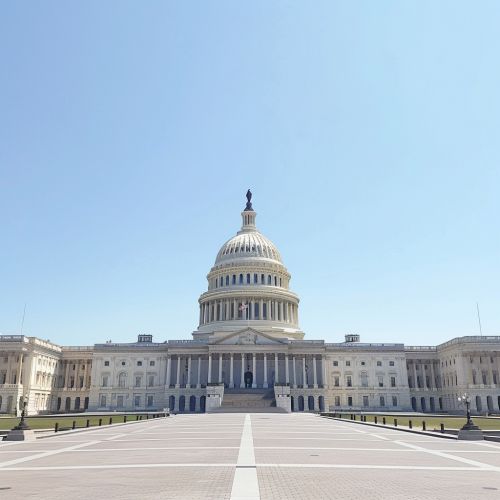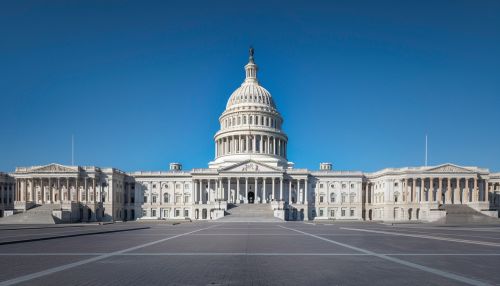United States Congress
Overview
The United States Congress is the bicameral legislature of the federal government of the United States, and consists of two chambers: the House of Representatives and the Senate. The Congress meets in the United States Capitol in Washington, D.C. Both senators and representatives are chosen through direct election, though vacancies in the Senate may be filled by a governor's appointment.


Structure
The Congress is bicameral, meaning it is composed of two chambers. The United States Constitution grants each chamber unique powers and responsibilities. The Senate is composed of two senators from each state, while the House of Representatives is made up of representatives from each state, the number of which is proportional to its population.
House of Representatives
The House of Representatives is composed of 435 members, who serve two-year terms. The presiding officer of the House is the Speaker of the House, who is elected by the House members at the beginning of each new Congress. The Speaker and other leaders are responsible for determining the legislative agenda, and often have significant influence over the legislative process.
Senate
The Senate is composed of 100 members, two from each state, who serve six-year terms. The presiding officer of the Senate is the Vice President of the United States, who has the power to cast a vote in the event of a tie. In the Vice President's absence, the presiding officer is the President pro tempore of the Senate, who is traditionally the longest-serving member of the majority party.
Powers and Functions
The United States Congress has numerous powers and functions, many of which are outlined in Article I, Section 8 of the Constitution. These include the power to levy and collect taxes, to coin money and regulate its value, to provide for the punishment of counterfeiting, to establish post offices and roads, to promote the progress of science and useful arts, to declare war, and to raise and support armies.
Legislative Process
Bills can be introduced in either the House or the Senate, with the exception of revenue bills, which must originate in the House. Once a bill is introduced, it is referred to a committee, which studies the bill and may hold hearings on it. If the committee approves the bill, it is sent to the floor of the House or Senate for debate and vote. If passed by both chambers, the bill is sent to the President for approval or veto.
History
The United States Congress was established by the Constitution in 1789, replacing the Congress of the Confederation that had governed the United States since the end of the Revolutionary War. The first Congress met in New York City, and moved to Philadelphia in 1790 before finally settling in Washington, D.C. in 1800.
